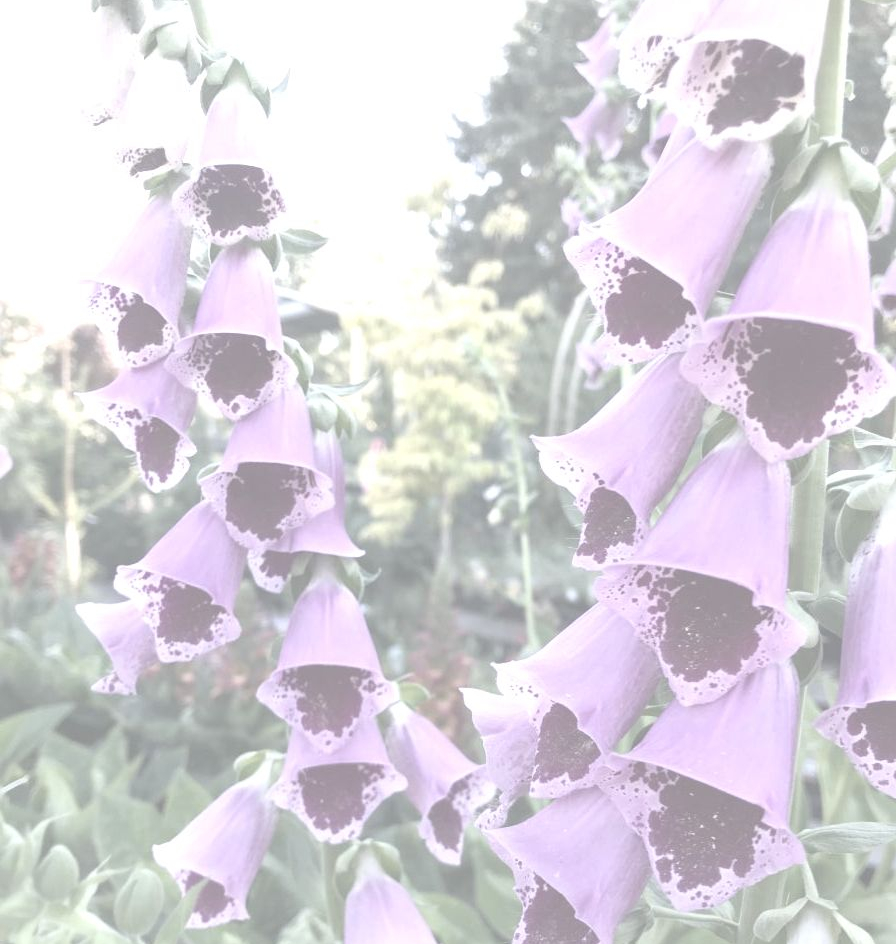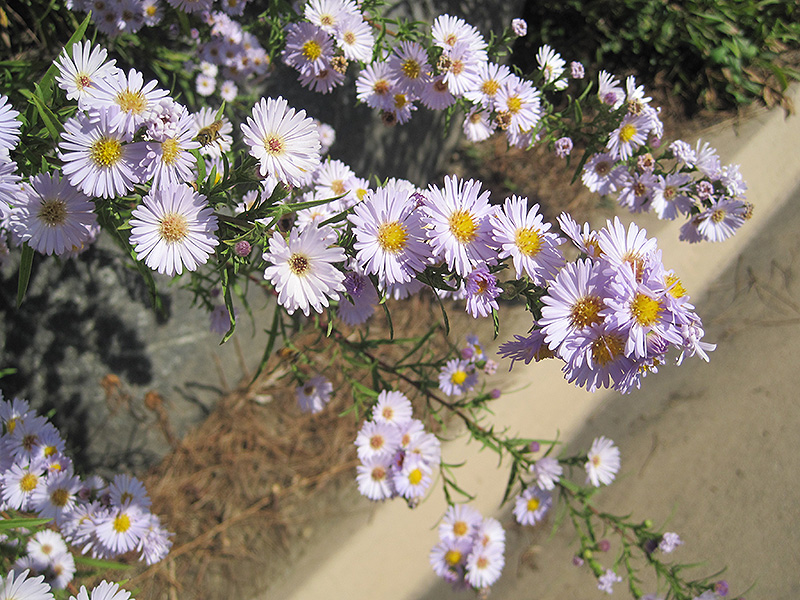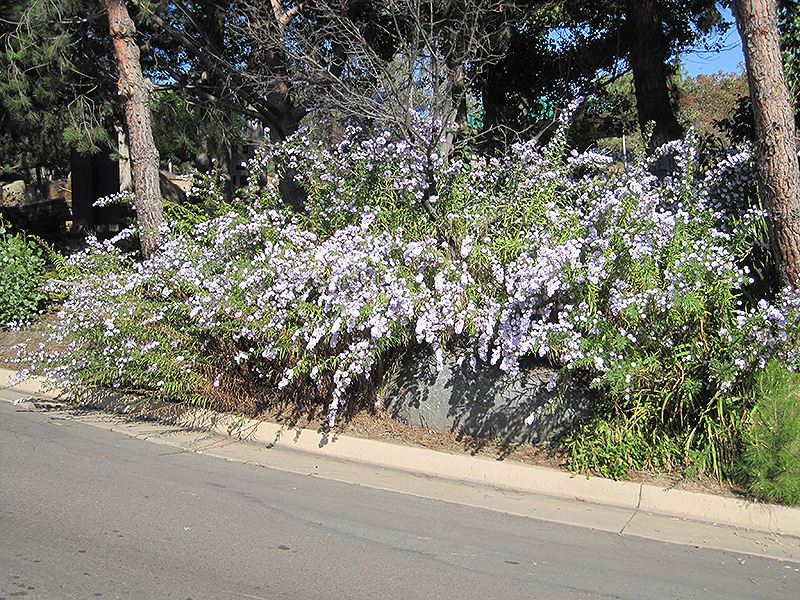Height: 4 feet
Spread: 3 feet
Sunlight:
![]()
![]()
Hardiness Zone: 6a
Other Names: Pacific Aster, Aster chilensis
Description:
A vigorous, upright spreading perennial featuring ascending stems smothered by sprays of lilac blue daisy flowers from mid-summer to fall; yellow center discs mature to red; attracts pollinators and is easy to grow; good for erosion control
Ornamental Features
California Aster is covered in stunning lilac purple daisy flowers with shell pink overtones and gold eyes along the stems from mid summer to late fall. The flowers are excellent for cutting. Its small narrow leaves remain emerald green in color throughout the season.
Landscape Attributes
California Aster is a dense herbaceous perennial with a shapely form and gracefully arching foliage. Its relatively fine texture sets it apart from other garden plants with less refined foliage.
This is a relatively low maintenance plant, and is best cleaned up in early spring before it resumes active growth for the season. It is a good choice for attracting bees and butterflies to your yard, but is not particularly attractive to deer who tend to leave it alone in favor of tastier treats. Gardeners should be aware of the following characteristic(s) that may warrant special consideration;
- Spreading
- Self-Seeding
California Aster is recommended for the following landscape applications;
- Mass Planting
- Border Edging
- General Garden Use
- Groundcover
- Naturalizing And Woodland Gardens
- Container Planting
Planting & Growing
California Aster will grow to be about 4 feet tall at maturity, with a spread of 3 feet. Its foliage tends to remain dense right to the ground, not requiring facer plants in front. It grows at a medium rate, and under ideal conditions can be expected to live for approximately 10 years. As an herbaceous perennial, this plant will usually die back to the crown each winter, and will regrow from the base each spring. Be careful not to disturb the crown in late winter when it may not be readily seen!
This plant does best in full sun to partial shade. It is very adaptable to both dry and moist growing conditions, but will not tolerate any standing water. It is considered to be drought-tolerant, and thus makes an ideal choice for a low-water garden or xeriscape application. It is not particular as to soil type or pH, and is able to handle environmental salt. It is somewhat tolerant of urban pollution. This species is native to parts of North America. It can be propagated by division.
California Aster is a fine choice for the garden, but it is also a good selection for planting in outdoor pots and containers. Because of its height, it is often used as a 'thriller' in the 'spiller-thriller-filler' container combination; plant it near the center of the pot, surrounded by smaller plants and those that spill over the edges. It is even sizeable enough that it can be grown alone in a suitable container. Note that when growing plants in outdoor containers and baskets, they may require more frequent waterings than they would in the yard or garden.


